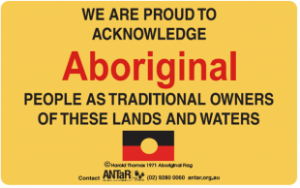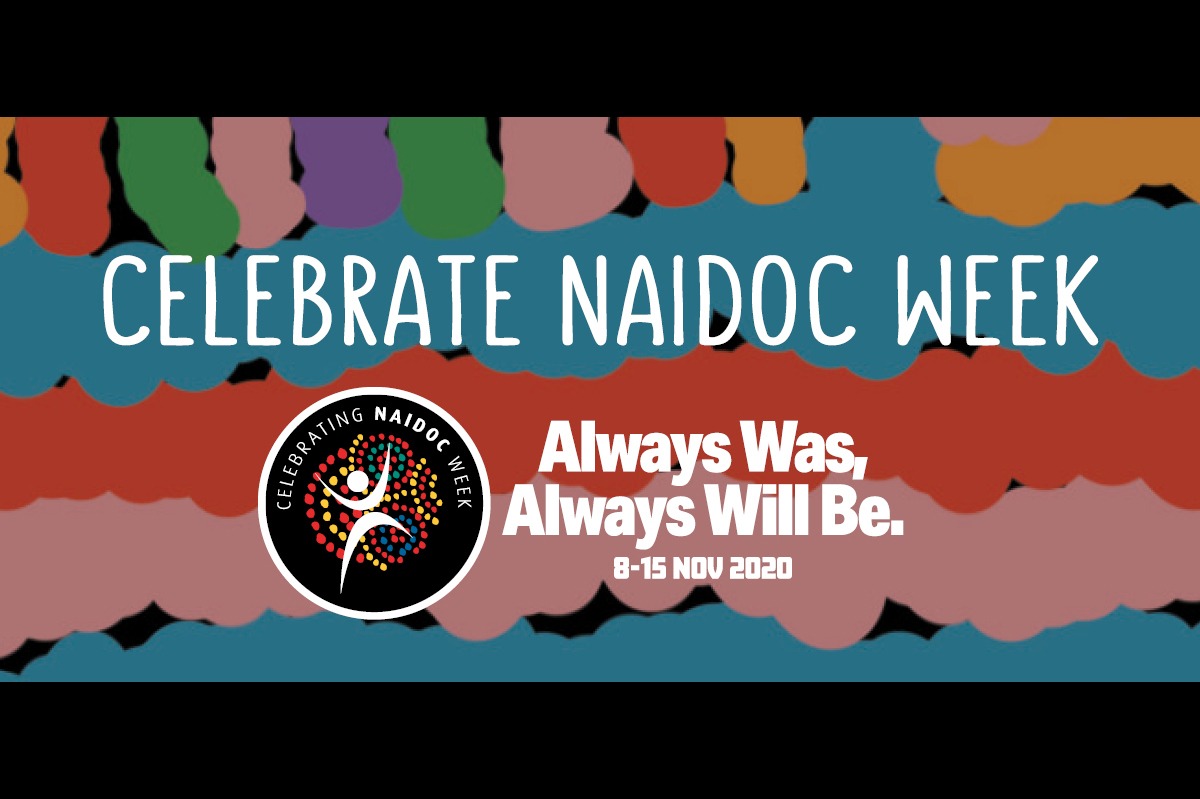 The story goes that a couple of well-meaning inner urbanites had a front door plaque that read “We are proud to acknowledge Aboriginal people as traditional owners of these lands and waters”. And when a couple of said Aboriginal people came knocking on the door to be welcomed home, the door was opened and then firmly shut on them. There was no happy ending for anyone in this story.
The story goes that a couple of well-meaning inner urbanites had a front door plaque that read “We are proud to acknowledge Aboriginal people as traditional owners of these lands and waters”. And when a couple of said Aboriginal people came knocking on the door to be welcomed home, the door was opened and then firmly shut on them. There was no happy ending for anyone in this story.
NAIDOC week is an important week in our calendar, celebratory for many, and for Indigenous culture. But it’s also an awkward week for non-indigenous Australians, uncomfortable truths, uncertainty navigating what is respectful and celebratory, and what is paternalist and privileged. I feel it personally in the small and large things in daily life; we have a flag pole at our place, and yet I’m not sure what the protocol is about flying the Indigenous flag this week when I’m not Indigenous. I want to show my heartfelt support for the First Nations people of Australia but I’m unclear whether that’s ok, and if it’s seen as lip service.
I’m learning, but too slowly and I’m not always sure of what resources are available to steer my understanding and insights.
In recent years I’ve made the mistake of saying in a public forum “Welcome to Country” when only Traditional Owners/Custodians of the land on which the event takes place can deliver a Welcome to Country. It’s not a mistake I’ll ever make again; if a Traditional Owner is not available to do a Welcome to Country, an Acknowledgement of Country can be delivered instead.
I currently have no colleagues who identify as ATSI (Aboriginal or Torres Strait Islander), Indigenous or First Nations, and yet all the while I’ve been working on a number of Indigenous related projects this year. Why am I working on these and not with someone with Indigenous heritage? Should we all be trying harder to address this lack of diversity? But here’s the rub. Only 3% of all Australian’s identify as Indigenous, and the most recent ABS statistics from 2016 show the spread of our Indigenous country men and women doesn’t always correlate with meeting diversity targets.
Estimated resident population, Indigenous status, 30 June 2016
| Aboriginal only | Torres Strait Islander only | Both Aboriginal and Torres Strait Islander | Total Aboriginal and/or Torres Strait Islander | Non-Indigenous | Total | |
| no. | no. | no. | no. | no. | no. | |
| NSW | 254,842 | 5,888 | 4,955 | 265,685 | 7,467,173 | 7,732,858 |
| VIC | 54,044 | 2,350 | 1,373 | 57,767 | 6,115,405 | 6,173,172 |
| QLD | 176,910 | 24,873 | 19,493 | 221,276 | 4,623,876 | 4,845,152 |
| SA | 40,393 | 1,115 | 757 | 42,265 | 1,670,578 | 1,712,843 |
| WA | 96,497 | 1,882 | 2,133 | 100,512 | 2,455,466 | 2,555,978 |
| TAS | 26,152 | 1,322 | 1,063 | 28,537 | 488,977 | 517,514 |
| NT | 71,288 | 1,020 | 2,238 | 74,546 | 171,132 | 245,678 |
| ACT | 7,113 | 196 | 204 | 7,513 | 395,591 | 403,104 |
| AUS | 727,485 | 38,660 | 32,220 | 798,365 | 23,392,542 | 24,190,907 |
Estimated resident Aboriginal and Torres Strait Islander population, Remoteness Areas, 30 June 2016
| Aboriginal and Torres Strait Islander | Non-Indigenous | Total | |
| Remoteness Areas | % | % | % |
| Major Cities | 37.4 | 72.7 | 71.6 |
| Inner Regional | 23.7 | 17.8 | 18.0 |
| Outer Regional | 20.3 | 8.0 | 8.4 |
| Remote | 6.7 | 1.0 | 1.2 |
| Very Remote | 11.9 | 0.5 | 0.8 |
indigenous.gov.au
Having a job helps people build the future they want for their families and their communities.
Supporting people to find and stay in work and making sure everyone has the opportunity to own your own home, run your own business, and provide for yourself and your families will mean a strong future for Aboriginal and Torres Strait Islander people.
To make this happen, government and communities need to work together to:
- increase the number of Aboriginal and Torres Strait Islander people who have work
- train more people for local jobs in their communities
- support Indigenous rangers to manage land and sea country
- progress land and Native Title claims
- negotiate more community held township leases.
The Government works with Aboriginal and Torres Strait Islander people, to help you build your future your way. Different communities will have different priorities and different ways they want to develop and sustain economic independence in their region.
Many of these events are linked to this year’s theme, Always Was, Always Will Be. The theme recognises that First Nations people have occupied and cared for this continent for over 65,000 years and their spiritual and cultural connection to Country. This has heightened my awareness and understanding of the challenges and opportunities to First Nations people.
The government introduced the Indigenous Procurement Policy (IPP) on 1 July 2015 to give Indigenous businesses greater opportunity at winning Commonwealth contracts. The IPP leverages the Commonwealth’s annual multi-billion procurement spend to drive demand for Indigenous goods and services, stimulate Indigenous economic development and grow the Indigenous business sector. For more information refer to Indigenous Procurement Policy.
Links
iWork is now Australia’s leading Indigenous jobs board with over 5,000 Indigenous people registered for direct work opportunities
https://www.indigenous.gov.au/news-and-media/announcements/indigenous-apprenticeships-program-0www.supplynation.com
Supply Nation provides Australia’s leading database of verified Indigenous businesses which can be searched by business name, product, service, area, or category.

Anita is the Executive Director of Slade Group, and a member of the advisory board. In a career spanning roles working in government, not-for-profit, public company and the SME sector, Anita has a broad view of the landscape of Australians at work. Committed to making a difference in her professional and personal life, Anita is a Director of the Wheeler Centre for Books, Writing & Ideas, previous Chair of Melbourne Girls Grammar School, and a Non Executive Director of online men’s’ lifestyle publisher Boss Hunting.

